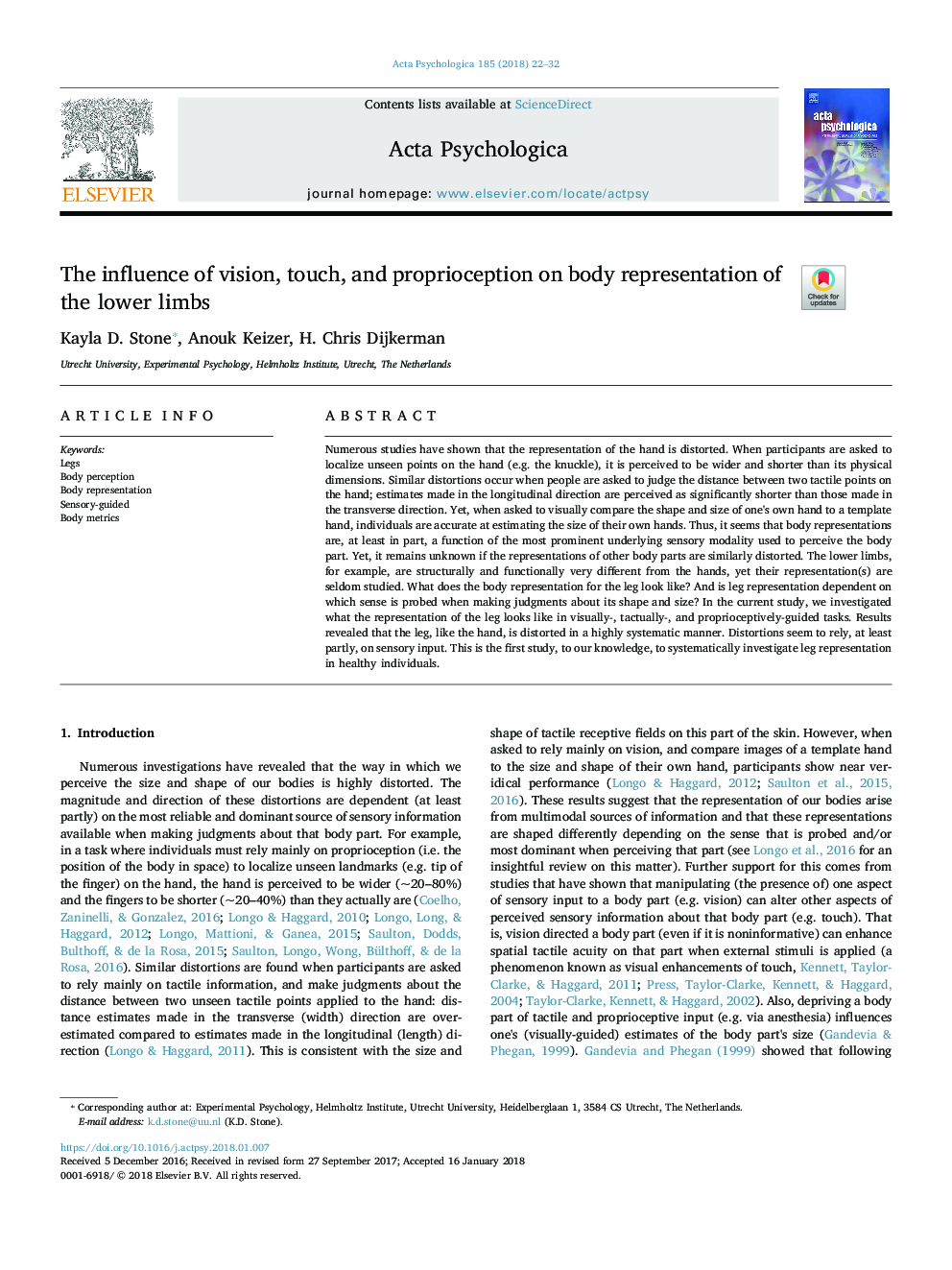| Article ID | Journal | Published Year | Pages | File Type |
|---|---|---|---|---|
| 7276697 | Acta Psychologica | 2018 | 11 Pages |
Abstract
Numerous studies have shown that the representation of the hand is distorted. When participants are asked to localize unseen points on the hand (e.g. the knuckle), it is perceived to be wider and shorter than its physical dimensions. Similar distortions occur when people are asked to judge the distance between two tactile points on the hand; estimates made in the longitudinal direction are perceived as significantly shorter than those made in the transverse direction. Yet, when asked to visually compare the shape and size of one's own hand to a template hand, individuals are accurate at estimating the size of their own hands. Thus, it seems that body representations are, at least in part, a function of the most prominent underlying sensory modality used to perceive the body part. Yet, it remains unknown if the representations of other body parts are similarly distorted. The lower limbs, for example, are structurally and functionally very different from the hands, yet their representation(s) are seldom studied. What does the body representation for the leg look like? And is leg representation dependent on which sense is probed when making judgments about its shape and size? In the current study, we investigated what the representation of the leg looks like in visually-, tactually-, and proprioceptively-guided tasks. Results revealed that the leg, like the hand, is distorted in a highly systematic manner. Distortions seem to rely, at least partly, on sensory input. This is the first study, to our knowledge, to systematically investigate leg representation in healthy individuals.
Related Topics
Life Sciences
Neuroscience
Cognitive Neuroscience
Authors
Kayla D. Stone, Anouk Keizer, H. Chris Dijkerman,
